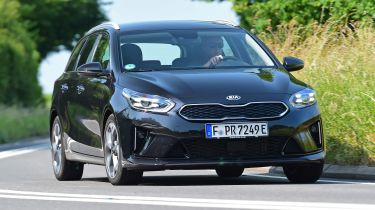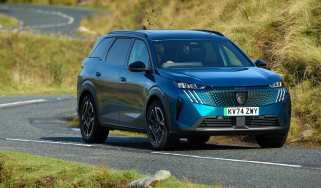Kia Ceed Sportswagon PHEV (2020-2021) review
It's practical and well equipped, but the Kia Ceed Sportswagon plug-in hybrid is also quite expensive and pretty dull to drive

Pros
- Large boot
- Long equipment list
- Smooth and quiet in electric mode
Cons
- Quite expensive
- Rivals are better to drive
- Engine sounds harsh when pushed
| Car type | Electric range | Fuel economy | CO2 emissions |
|---|---|---|---|
| Plug-in hybrid | 29 miles | 188mpg | 33g/km |
Kia was one of the first mainstream manufacturers to bring a plug-in hybrid (PHEV) family car to the UK market, in the shape of the Niro PHEV SUV. In 2020, the Korean brand's electrified range has expanded to include two variants of its popular Ceed family car: the XCeed PHEV crossover and this Ceed Sportswagon PHEV estate car.
Both use a 1.6-litre petrol engine married to an electric motor for a total power output of 139bhp, while an 8.9kWh battery promises decent electric range approaching 30 miles. The combination of company-car-friendly CO2 emissions and estate-car practicality are key to the Ceed Sportswagon PHEV's appeal – it's definitely a car bought with the head rather than the heart.
The current Ceed Sportswagon isn't a bad-looking car but can't help seeming a bit bland and anonymous next to more creative rival offerings such as the latest Ford Focus Estate or the SEAT Leon ST. That feeling persists when you get behind the wheel and set off: again, the Ceed is perfectly comfortable and competent on most roads, but there's little in the way of involvement or excitement to get you looking forward to a drive.
Inside, the Ceed Sportswagon PHEV is finished to a high standard and comes with plenty of standard kit – although that's partly due to the fact that this plug-in model is only offered in the high-spec (and relatively expensive) 3 trim level. The lack of design flair outside isn't made up for on the inside, however; sombre colours and a workmanlike feel are the order of the day, but at least all the major controls are intuitive and there's a huge screen to display Kia's top-notch infotainment system on.
Practicality is this car's trump card, however. Even with all seats and the tonneau cover in place, you have a generous 437-litre boot capacity to work with. And when more space is needed, you can drop the rear seats, revealing a perfectly flat load area (with no loading lip) that can take up to 1,506 litres of garden waste, flat-pack furniture or whatever else you need to carry. Unlike the much more expensive Mercedes E-Class Estate plug-in hybrid, there's no intrusion into the luggage area from the battery pack.
Overall, the Ceed Sportswagon PHEV holds limited appeal for private buyers, as its near-£30,000 asking price is a lot for such an unglamorous, mainstream car; it's definitely more suited to company-car users who need a large and practical vehicle. Just as long as they're not frequent long-distance motorway drivers – the regular diesel-engined Ceed Sportswagon is still the more efficient choice for that type of driving. For a more detailed look at the Kia Ceed Sportswagon PHEV, read on for the rest of our in-depth review...



